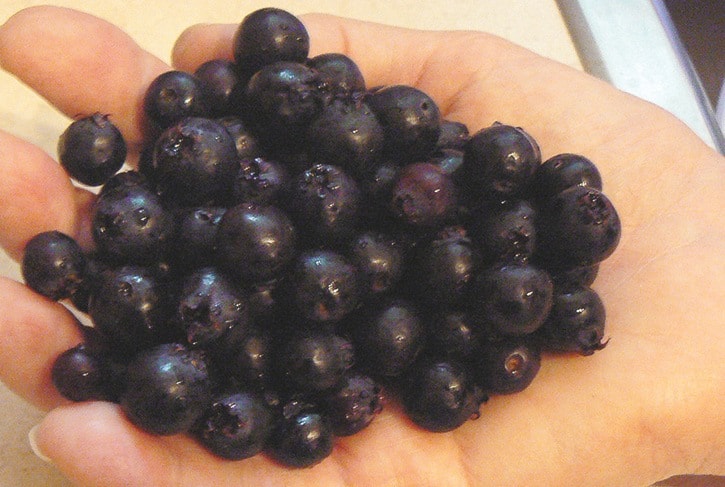Little did I know, as a prairie child picking berries, that I was launching a lifelong love of saskatoons.
So yummy, juicy and cool were they, half the haul never made it home to mother’s kitchen.
Late July to early August is time to gather this most abundant indigenous fruit.
In a good year, one can freeze enough blue-black berries to last through winter, and saskatoon syrup is like a splash of fresh fruit at Christmastime.
Aboriginal groups valued this prolific wild plant above all others, pruning, weeding and tending with great care. A member of the rose family, saskatoon (Amelanchier alnifolia) was a main ingredient in pemmican.
The name saskatoon derives from the Cree “Mis-sask-qua-too-mina”; the city was named for the fruit.
For thousands of years, the berries were sun-dried whole or made into fruit leather for winter nourishment.
The fruit itself is a berry-like pome, resembling a blueberry in colour and size.
When rains are plentiful, the berry grows larger, to a robust 15 mm (.6 inch) diameter. The plant is easily propagated, offering gardeners white spring blossoms, summer fruit and scarlet autumn colour.
Americans from northwest and north-central U.S. may not be familiar with saskatoons, but know the same plant as Pacific serviceberry, juneberry or shadbush. Thousands of acres are cultivated in Saskatchewan, selling for about $5 a litre.
Rich in antioxidants, vitamins, calcium, iron and fibre, saskatoons are touted as the “new super fruit,” albeit one that sustained North American aboriginal people for millennia.
For saskatoon recipes, e-mail Christine at wildernesswest@shaw.ca
